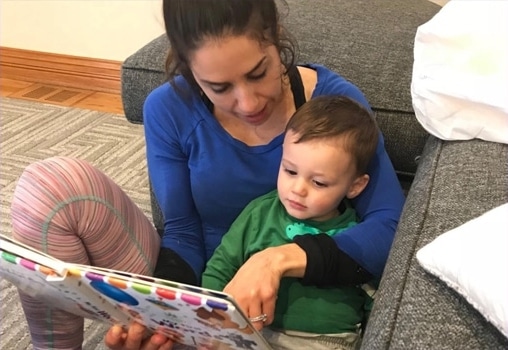Everyone is familiar with the tableau of a child nestled against their mother or father who reads a story from a picture book. That image might include your parents with you or you and your little one. While the vision conjures warmth and a sense of home, reading with children is also a tool for early childhood development in preschool.
In this blog, our staff at Bubbles Academy explores the role storytelling plays in helping your child learn. Discover how you and your child’s educators can unlock a love of learning through children’s books.
The Importance of Reading to and With Children
In an age where screens and digital media dominate as the preferred form of entertainment for all ages, preschool teachers underscore the increasing need for trusted adults to read to children from books. Reading or telling stories together helps them reach critical preschool developmental milestones that determine their success in future grades. Forming this habit while wrapping it with intentional conversations influences multiple aspects of your child’s preschool cognitive development.
How Turning Pages Benefits Early Childhood Development in Preschool and Beyond
Reading and storytelling improve cognitive and communication abilities in children of all ages. However, infants, toddlers, and preschoolers can reap the most noticeable benefits as they develop speech, hearing, and problem-solving abilities. Some of those benefits include:
- Emotional development: All humans are emotional beings, especially children. Reading invites children to connect with characters beyond themselves, helping them develop empathy and learn lessons about emotional expression.
- Social skills: As your child emotionally connects with characters, they may apply what they learn to real-life relationships. Social-emotional learning for preschoolers ensures that they find a comfortable niche within a community and help others do the same with empathy.
- Artistry and creativity: Children’s books contain colorful, captivating illustrations, riveting stories, and sometimes interesting sounds connected with the pages. This media invites your child to participate in the story rather than passively observe.
- Listening and reading comprehension: When you read or tell your child a story, you can subtly quiz them to see if they remember specific details. This activity can help them develop their listening and reading comprehension capabilities, helping them latch onto pertinent information.
- Confident speech and communication: Eventually, your child will pick up and understand the words printed on each page. Ask them to read as they become a more confident reader to build their speaking skills.
- Community building: Have you ever developed friendships based on your appreciation for specific books? That’s exactly what your child has the chance to do! Read-alongs, library storytimes, and other events help them start and build lasting friendships.
Engaging Your Child in Guided Reading Sessions
While the simple act of reading amplifies child growth and education in the early years, you can supplement the habit with other activities to diversify their skills. Implement some of the following suggestions to enrich your parent-child storytelling experience and enhance early childhood development in preschool.
Before You Read
Carefully examine the book’s cover together. Read the title aloud before asking your child some questions, like:
- Who do you think is the main character?
- What do you think the story will be about?
- What do you think will happen to the character during the story?
- What does the title of the book say?
These questions help your child prepare for the story and pay attention to its details.
While You Read
Preschoolers thrive with interactive educational exercises. To keep your preschooler engaged, use the following developmentally appropriate practices in early childhood reading sessions.
- Changing your voice: While reading, change your voice to suit the characters and portrayed scenarios.
- Including your child: Ask your child how they would feel in the character’s shoes if they encountered upsetting or concerning situations. Get them involved with reading by having them turn pages and help you with phrases repeated throughout the book.
- Pointing: Point to each word as you read to help your child identify and associate the text with the spoken word.
- Building early literacy skills: Show and discuss the differences between uppercase and lowercase letters, sound out letters together, and make a game of identifying different letters on the page.
Create Magic Beyond the Page With These Tips
In addition to choosing age-appropriate reading material, you can engage your preschooler in other creative outlets to improve their reading and writing skills. Some excellent tips to encourage early learning in preschool-age children include:
- Creating picture books together
- Drawing pictures and making up stories to go along with them
- Asking your child to tell their own story using a book’s illustrations to inform their narrative
- Making art using various letters
Let Bubbles Academy Enhance Your At-Home Efforts
Early childhood development in preschool settings helps your child thrive academically, socially, and emotionally. At Bubbles Academy, we create a safe, stimulating environment where children love learning. Call 312-944-7677 or register online.

